The Core i7 980X Review: Intel's First 6-Core Desktop CPU
by Anand Lal Shimpi on March 11, 2010 12:00 AM EST- Posted in
- CPUs
It’s rare that anything we review has the longevity that Intel’s Core i7 Bloomfield platform has enjoyed. If you were one of the fortunate few to buy a Core i7 920, 940 or 965 back in November 2008, you’d still have one of the fastest desktop CPUs today in March 2010.
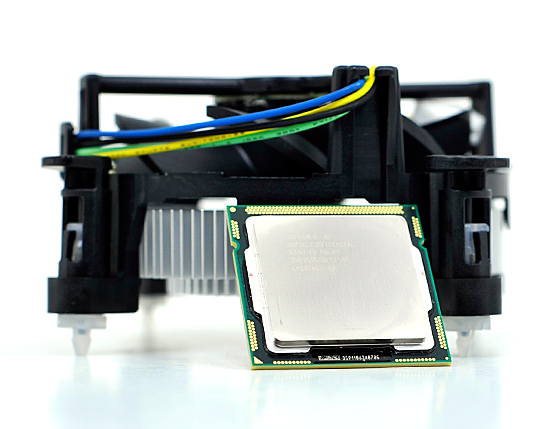
Lynnfield was introduced in 2009, but still couldn't dethrone Bloomfield.
In fact, other than a few minor speed bumps, Intel hasn’t done much with its LGA-1366 platform in the past 15 months. Last year Intel introduced Nehalem for the rest of us with its LGA-1156 socket and in January we got the first dual-core derivatives.
Now it’s finally time to take care of the folks who invested in Nehalem and Core i7 early on. In the coming weeks Intel will be shipping its first 6-core desktop processor, built using the same 32nm process used in the Clarkdale Core i3/i5 CPUs. It’s codenamed Gulftown but today we can call it the Core i7 980X. Did I mention that with a BIOS update it’s fully compatible with all X58 motherboards? That’s right, even if you bought a board in November 2008 - you can upgrade directly to Gulftown.
| Processor | Core Clock | Cores / Threads | L3 Cache | Max Turbo | TDP | Price |
| Intel Core i7 980X | 3.33GHz | 6 / 12 | 12MB | 3.60GHz | 130W | $999 |
| Intel Core i7 975 | 3.33GHz | 4 / 8 | 8MB | 3.60GHz | 130W | $999 |
| Intel Core i7 960 | 3.20GHz | 4 / 8 | 8MB | 3.46GHz | 130W | $562 |
| Intel Core i7 930 | 2.80GHz | 4 / 8 | 8MB | 3.06GHz | 130W | $284 |
| Intel Core i7 870 | 2.93GHz | 4 / 8 | 8MB | 3.60GHz | 95W | $562 |
| Intel Core i7 860 | 2.80GHz | 4 / 8 | 8MB | 3.46GHz | 95W | $284 |
| Intel Core i5 750 | 2.66GHz | 4 / 4 | 8MB | 3.20GHz | 95W | $196 |
| Intel Core i5 670 | 3.46GHz | 2 / 4 | 4MB | 3.73GHz | 73W | $284 |
| Intel Core i5 661 | 3.33GHz | 2 / 4 | 4MB | 3.60GHz | 87W | $196 |
| Intel Core i5 660 | 3.33GHz | 2 / 4 | 4MB | 3.60GHz | 73W | $196 |
| Intel Core i5 650 | 3.20GHz | 2 / 4 | 4MB | 3.46GHz | 73W | $176 |
| Intel Core i3 540 | 3.06GHz | 2 / 4 | 4MB | N/A | 73W | $133 |
| Intel Core i3 530 | 2.93GHz | 2 / 4 | 4MB | N/A | 73W | $113 |
| Intel Pentium G9650 | 2.80GHz | 2 / 2 | 3MB | N/A | 73W | $87 |
The Entire 2010 Nehalem/Westmere lineup
In fact, that’s exactly what I did for today’s review. This is Intel’s DX58SO motherboard I used in my original Core i7 review in November 2008:
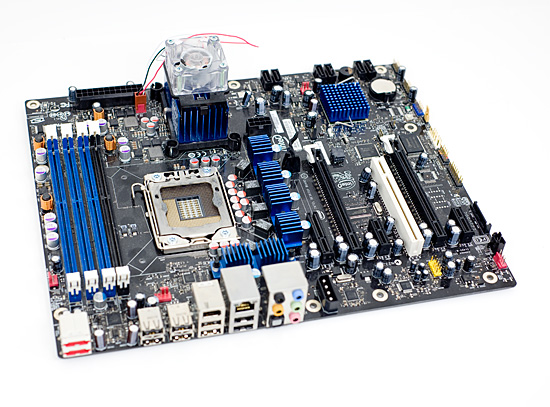
It’s the same exact board, but updated to the 5020 BIOS that’s currently available on Intel’s site. Intel was sneaky and actually enabled Gulftown support in its motherboards a few weeks ago.
And here we have the result:
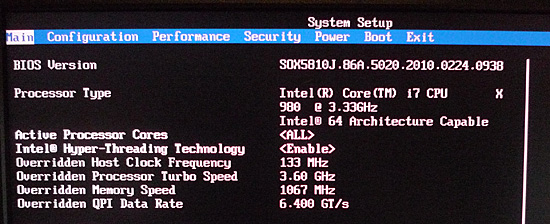
Intel’s Core i7 980X, running at 3.33GHz with 6 cores, 12 threads and a massive 12MB L3 cache all running on a motherboard that shipped a year and a half ago.

The old board works mostly fine with the 980X but with some odd bugs and quirks that I ran into. I found that my older DDR3-1066 memory wouldn't overclock to 1333MHz with Gulftown, although it did just fine with Bloomfield for some reason.
It’s not just Intel enabling support either. All motherboard manufacturers either have or are expected to have BIOSes with Gulftown support by the time this chip ships in the coming weeks. ASRock sent over its X58 Extreme, which worked perfectly with the new chip:
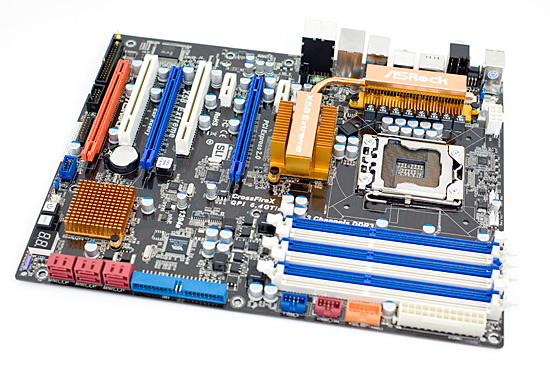
It’s Extreme
The coolest part of Gulftown is that by building it on Intel’s 32nm process it’s actually smaller than both Bloomfield and Lynnfield, despite having 50% more cores and L3 cache:
| CPU | Codename | Manufacturing Process | Cores | Transistor Count | Die Size |
| Westmere 6C | Gulftown | 32nm | 6 | 1.17B | 240mm2 |
| Nehalem 4C | Bloomfield | 45nm | 4 | 731M | 263mm2 |
| Nehalem 4C | Lynnfield | 45nm | 4 | 774M | 296mm2 |
| Westmere 2C | Clarkdale | 32nm | 2 | 384M | 81mm2 |
| AMD Phenom II X4 | Deneb | 45nm | 4 | 758M | 258mm2 |
At 1.17 billion transistors, it’s a beefy chip but the monolithic die only measures 240mm^2. It’s even smaller than an AMD Phenom II X4. Not only does it have a smaller die than all quad-core Nehalem processors, but it also has the same TDP.
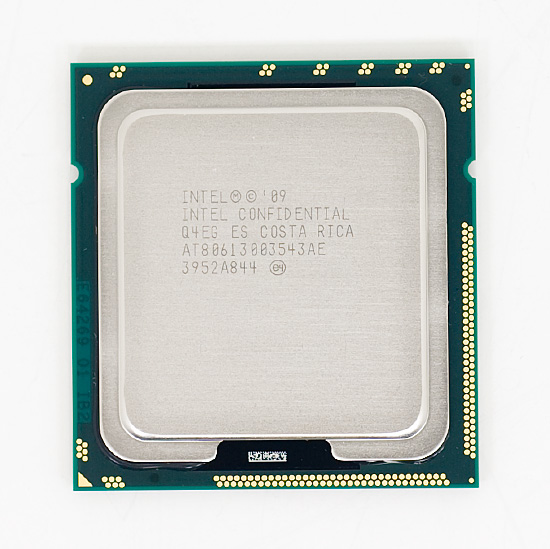
The 130W chip runs at 3.33GHz, but because of the high TDP it can only turbo up to 3.46GHz with more than two cores active. If only one or two cores are active, the chip can turbo up to 3.60GHz. With up to 6 cores running at 3.46GHz, Gulftown is not only the fastest CPU in Intel’s lineup, it’s also the fastest quad-core Intel makes. Only the Core i5 670 can run at a higher frequency with a single core active (3.73GHz vs 3.60GHz).
The downside to all of this is the price tag. The Core i7 980X is an Extreme Edition processor, meaning it’s introduced at the $999 price point. And currently it’s the only way to get 6-cores in a Core i7. Currently Intel doesn't have any plans to introduce 4-core versions of Gulftown on the desktop, although we will see some 32nm quad-core Xeons later this year.
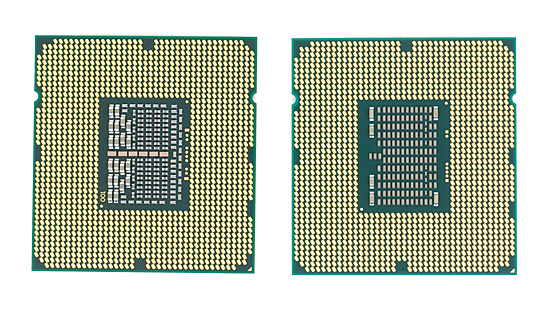
Bloomfield (left) vs. Gulftown (right)
This isn’t the first time that the $999 price tag comes with some exclusive features. The first Pentium 4 Extreme Edition was the very first to wear the EE brand. While all regular Pentium 4s at the time had a 512KB L2, the Pentium 4 Extreme Edition added a 2MB L3 cache - a feature that never trickled down to the mainstream P4s.
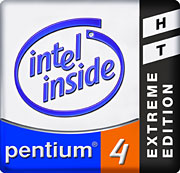
Since then, most Extreme Edition parts have just been higher clocked CPUs. Despite that, they do sell well enough for Intel to continue the practice. Given that this time around, the Core i7 980X will not only give you clock speed but more cores and cache, Intel will probably end up selling more of these than they ever have.










102 Comments
View All Comments
DarkUltra - Saturday, March 20, 2010 - link
I would love to see a task manager screenshot during the different multi-threaded benchmarks, also games, so we can see how it utilizes the six cores and two threads per core?drewintheav - Tuesday, March 16, 2010 - link
The INTEL i7 980X has dual QPI's and will run in a dual socket mainboard!!!Such as the EVGA W555 / Classified SR-2
magnes79 - Thursday, December 9, 2010 - link
Where did you get that information from? On intel website it says 1 QPI. from what I know and what always was the case all i7 series are single QPI's.THats why you have Xeon series with double QPI.
Please do not post incorrect information, because people get stuck with expensive equipment not able to use it properly.
Aenslead - Saturday, March 13, 2010 - link
This has got to be THE most worthless, useless, expensive pice of silicon I've ever seen. An average of 13% performance increase in SOME apps AND a decrease in gaming?Give me that 1k, and I'll get myself a GTX480, an SSD, and some DDR3 modules that will give me 2x, 3x or Xx times more performance in EVERYDAY use.
Thank goodness for CUDA, Stream, OpenCL and all that cr4p.
Cableaddict - Tuesday, March 16, 2010 - link
Aenslead,I think you're missing the whole point of this cpu. It wasn't built to go fast. It was built to due serious multi-tasking. The pro A/V crowd will buy these in droves.
I can't wait to get one for my digital audio system. It will be worth every penny.
Aenslead - Tuesday, March 16, 2010 - link
I understand your point.I do video editing myself as well as some animation, but thanks to Furry Ball (Maya) and Elemental plugins for AE and Premiere, I've come to love GPU power more than ever.
I've seen what's comming for CS5 and I do not see CPU playing an important role there.
I see very few people, like yourself, actually finding bennefit from these product launches - same goes to PII X6, although I believe this one will be FAR better priced and far more atractive.
Best,
dastruch - Friday, March 12, 2010 - link
Now that's what I'm saving some money for.- Friday, March 12, 2010 - link
Wondering how the i7 980X would do against a 6 core Opteron,Tech Report did some benchmark numbers when the 6 core Opterons (server) first came out,going head to head againt Xeons..interesting results when you compare the new i7. This is a rough estimate, but if AMD's 6 core is based on the 6 core Opteron this could be interesting..
http://techreport.com/articles.x/17005/11">http://techreport.com/articles.x/17005/11
http://techreport.com/articles.x/17005/7">http://techreport.com/articles.x/17005/7
complete report
http://techreport.com/articles.x/17005/1">http://techreport.com/articles.x/17005/1
- Friday, March 12, 2010 - link
asHsilverblue - Friday, March 12, 2010 - link
I'm somewhat confused as to why, on your review, the PII X4 965 seems rather greedy, but on Toms' review of the i7-980X, AMD's offering does much better.Toms' test setups for the X58:
Gigabyte X58A-UD5 (LGA 1366) X58 Express, BIOS F4
Corsair 6GB (3 x 2GB) DDR3-1600 7-7-7-20 @ DDR3-1333
Yours:
Intel DX58SO (Intel X58)
I'm going to presume Corsair DDR3-1333 4 x 1GB (7-7-7-20)
Toms' test setup for AM3:
Asus M4A79T Deluxe (Socket AM3) 790FX/SB750, BIOS 2304
Corsair 4GB (2 x 2GB) DDR3-1600 7-7-7-20 @ DDR3-1333
Yours:
Gigabyte GA-MA790FX-UD5P (AMD 790FX)
I'm going to presume Corsair DDR3-1333 2 x 2GB (7-7-7-20)
Toms' has the PII X4 965 idling 21W lower than the 980X and 32W lower at load (using Prime95), however you have the 965 idling 10W HIGHER and using 4W more at load. Is Prime95 just favouring AMD or is there some sort of problem with your 790 rig? I will concede that the AMD rig will be using less RAM on the Toms' setup which may account for some of the difference.
One thing to note: up the resolution on a CPU-limited title such as Left4Dead and the performance gap narrows markedly. Enable AA and there's no difference at all. For graphically intensive games and/or highest settings, it won't make sense to fork out $1000 no matter how good the CPU.
It'd be nice to see how good this CPU is with multiple graphics cards... :)